The northern part of the ring road is the toughest but is worth it for featuring the deadly Lake Nyos. After leaving Ndi Roland and Irene in Binka, I quickly pass through Nkambe and head straight to Misaje. The road has some rough sections, but easily crossed with a bicycle, and is overall quite good. The bridges are up and the surface is mostly smooth.
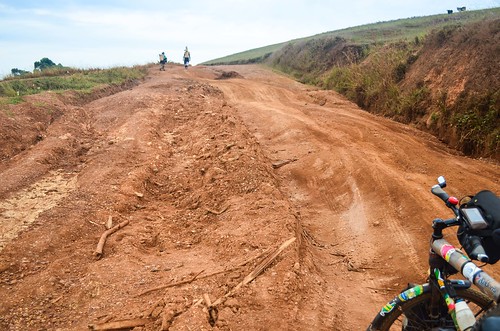
As I am probably again the only White around the ring road, I attract the attention of everyone whom I pass in the field of view. And on a bicycle, when I generally arouse surprise or interest, in Cameroon I trigger mockery and forced laughter. Several times a day I wonder if all the bad sides of people are depicted within the Cameroonians: bad temper, mockery, offhandedness and bad service, ignorance, falsehood, laziness, dishonesty … Even if the scenery is worth it, it doesn’t make happy rides to meet no one friendly during a whole day.
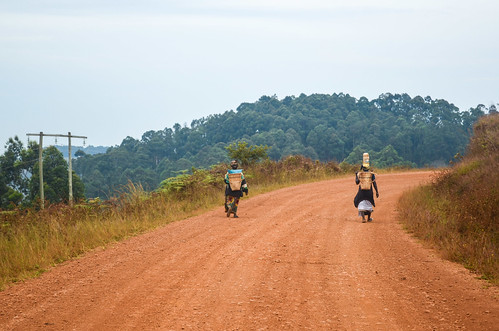
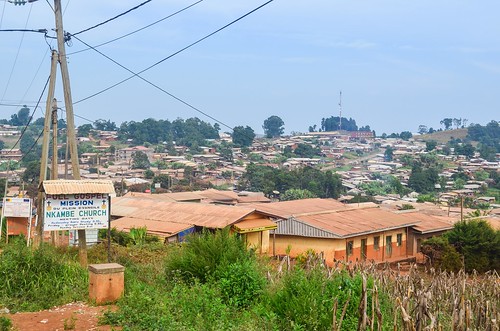
Breaking up a banknote of 2000 CFA (3 €) is hard. It is normal for the bills of 10’000 CFA (15 €) that are given only by ATMs, but 2000 CFA is a common note to pay with in a shop or small restaurant. Everyone must ask for change around. So when I hand out a note of 2000 CFA, it can happen that the man/lady will give it to a boy who will visit all the shops around and ask for change. After 1, or 5, or even 10 minutes, he will come back with my change. It happens because all the businesses open in the morning with an empty cash desk (even public ones like museums and post offices) and also because the Central African CFA franc (XAF) has problems of small change.

There is a very long downhill to Misaje, very enjoyable. Finally I get to see far away to the horizon.
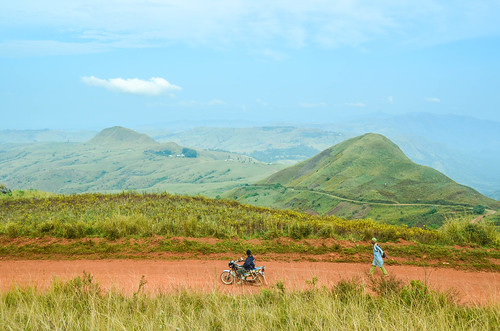
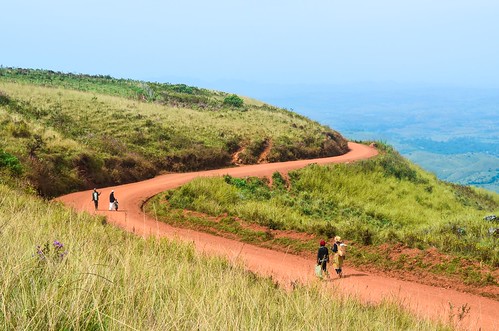
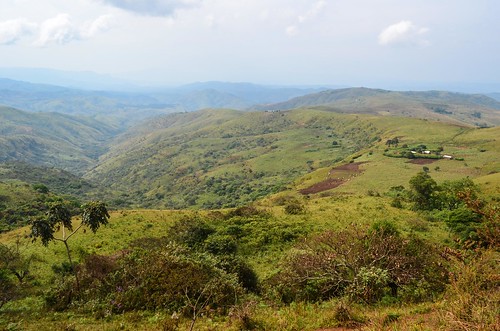
There are fewer and fewer villages, and I visit the small shop in Kimbi village to buy things for the afternoon. I must first wake up the fat lady sleeping on the counter. After I pay her for my purchase, she asks for food (there is plenty in her shop) for herself, claims that the baby has nothing to eat, and then asks for money. If she had eventually asked for a beer, she would have completed the uninteresting customary process of my interactions with people in Cameroon: meeting people in a village, disturbing their drinking afternoon beers in the shade, asking where I can find food and water, and being replied with “you know, here life is hard and we Africans suffer. Get me a beer“. Well, obviously it does not always happen like this, but way too often.
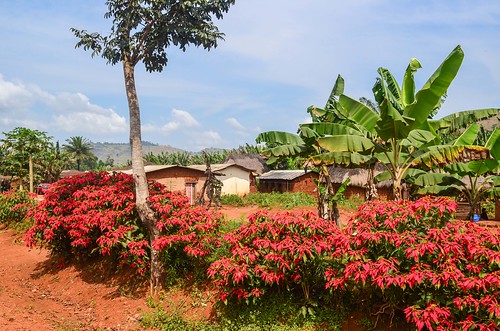
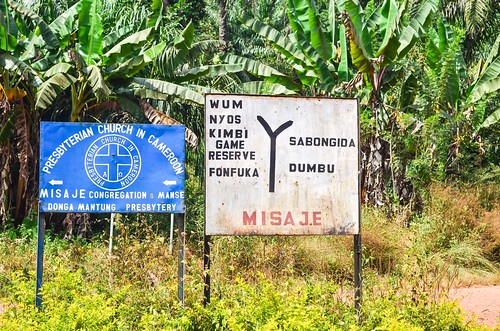

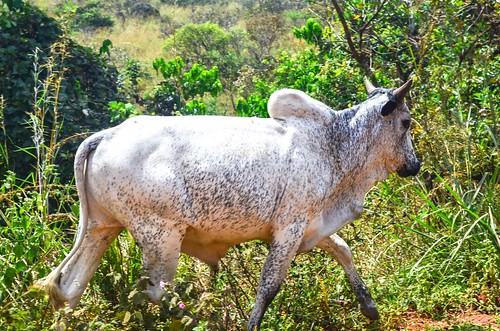
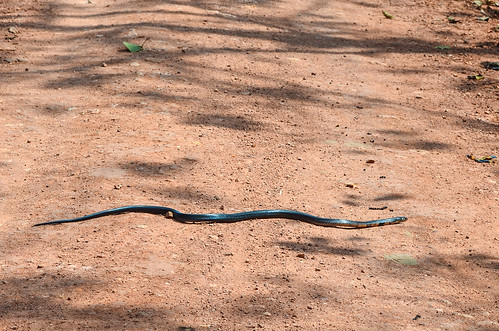
The neighboring Kimbi game reserve is actually only empty grassland. I don’t know when was the project abandoned, but for sure, today, there is nothing but a rusty sign to show it is a game reserve. I spot no animals apart from the cattle of the Fula people. The grass is burnt just being the sign reading “NO BUSHFIRE”.
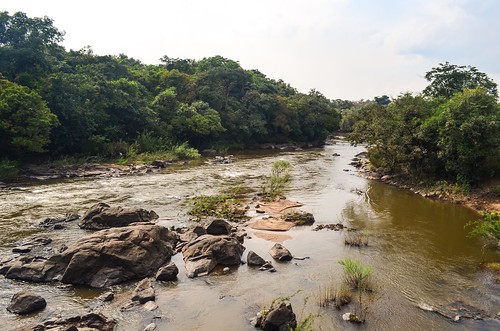
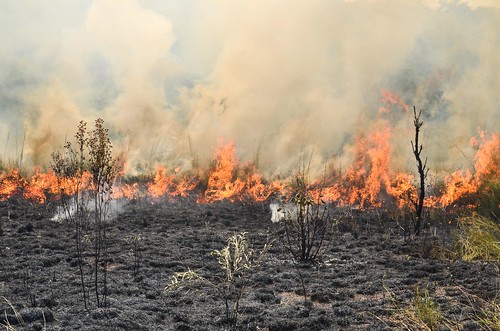
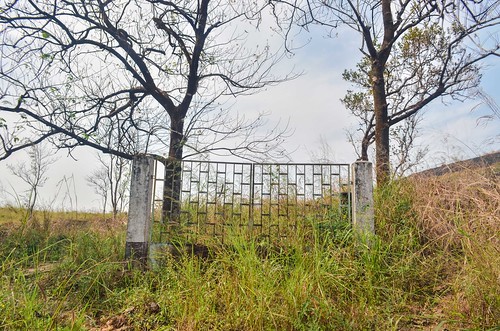
The Fulani herdsmen are using the empty and fertile area for their cattle. They are the same ethnic group, also called Peulh and Pular, spreading all over West Africa from Senegal to Cameroon, generally away from the coast, in the Muslim areas. They (and not only them) regularly trigger bush fires to burn the old grass so that fresh grass grows for their cattle.
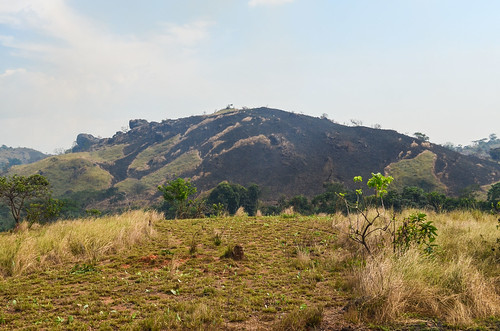
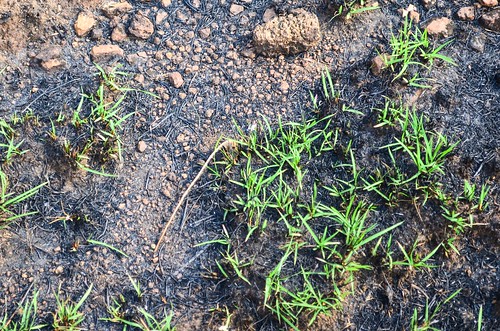
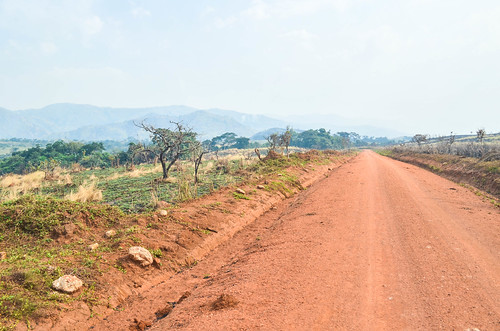
The dirt road remains good until about 8 km before Lake Nyos. There, it turns into a track of small stones, or large gravel. Anyway, into something too uncomfortable for me. It may be fine for motorbikes but not for my relatively narrow tires and the absence of suspension, so I decide to preserve my tires and push the bike on the distance.
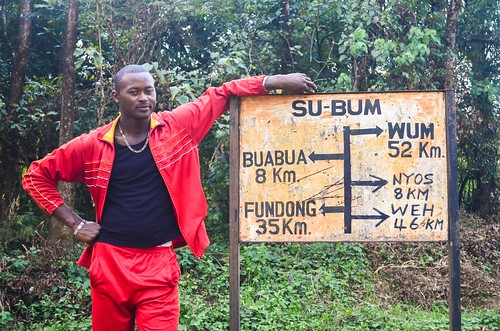
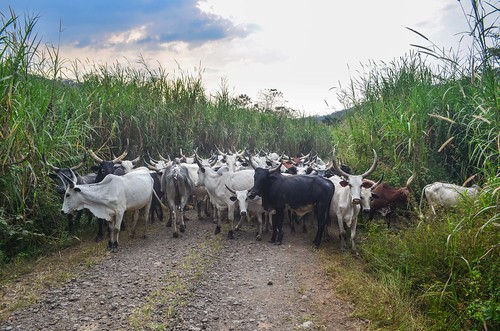
I make it to Lake Nyos, a very special sight with a terrific history, just for the night. Unfortunately, the Nyos village has no food and I manage to dig out 10 balls of peanut powder, a delicacy that can become very filling. The road to Lake Nyos, a crater lake, is paved for 2 kilometers with a 250 m of elevation gain, during which I continue to push the bike.
Drenched in my own sweat, I finally get to the lake and happily call it a day there. There are almost no villages in the region and no accommodation, but it is known that tourists can go there and camp after reporting to the military. The lake lies at 1100 m of elevation and reaches a depth of 208 meters for a size of only 2.0 x 1.2 km. It is a crater lake on the flank of an inactive volcano along the Cameroon line of volcanic activity stretching until Mount Cameroon.
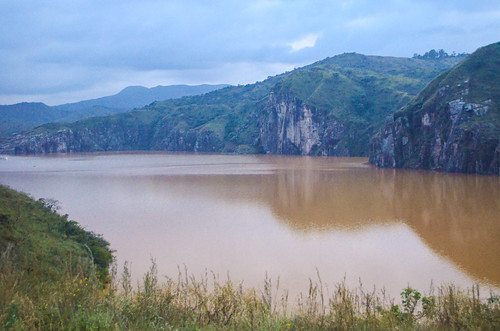
There are two small camps overlooking the lake. One is for the workers of Soletanche-Bachy, a French construction company working on the dam (and here again, subsidiary of the giant group Vinci), and the other for the Cameroonian army. The mission of the army is to watch the lake and the surroundings for two reasons, as a consequence of the two dangers caused by the lake.

First, the lake is deadly; it is the deadliest lake in the world: it sits directly over a pocket of magma (80 km below) which leaks CO2. Hence, the waters are saturated in CO2. It is not a problem, and I even took my shower in the lake in the evening. The problem is that it can explode and release a large cloud of CO2. There are only 3 lakes like this in the world.
In 1986, as a result of supersaturation of CO2 in the lake, 1700 people and 3500 died in the surroundings. CO2 is a gas heavier than air. Therefore, when it erupted from the lake at 1100 m of elevation, the 50 m thick cloud of CO2 spilled over the connecting valleys and traveled downward at 20-50 km/h. Every living being beneath suffocated in a radius of roughly 20 km. It happened in the night. The Wikipedia article has a testimony of a survivor who woke up to all his neighbors dead.
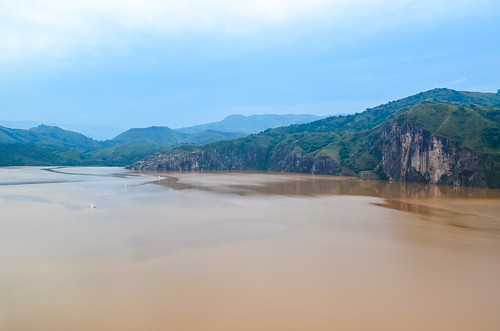
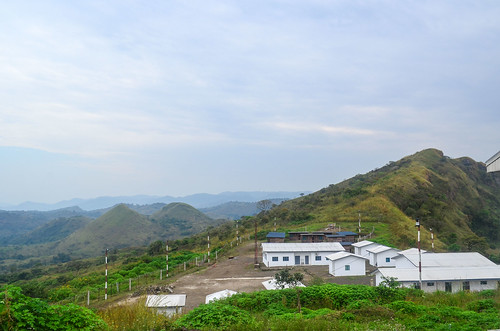
To prevent a recurrence, a degassing system has been placed. There are today degassing columns that automatically and continuously reduce the pressure of the CO2 in the lake. Alongside, there is a procedure within the military watching the lake: if the CO2 levels in the air become too much, it triggers an alarm. The alarm alerts the military, who in turn shoot in ther air with their rifles. When the neighboring inhabitants hear this, they must run up the closest hills, and thus be safe from the CO2 crawling in the valleys. There is a hill just next to the lake for the military themselves to be safe.
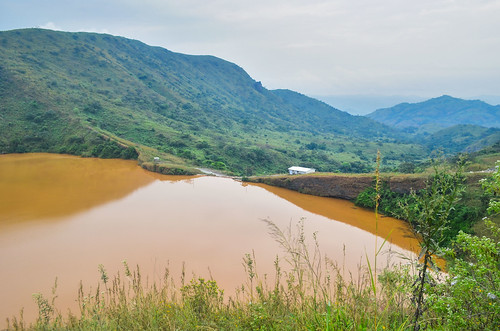
The second danger of the lake is its weakening natural dam. The lake is contained within the mountains and flows into a small stream on the western side. There is a natural dam of volcanic rock holding the lake together, but erosion has worn it away and a study has proven that it could collapse in the near future. If it does, the water would flood lower down the Northwest Province and even the nearest Nigerian states. The solution chosen to prevent this to happen was the strengthening of the lake wall. This is why the engineers of Soletanche-Bachy have been on site, they have recently poured piles of concrete into the lake wall. As the site is sensitive, the military is here against attacks, terrorism, etc.

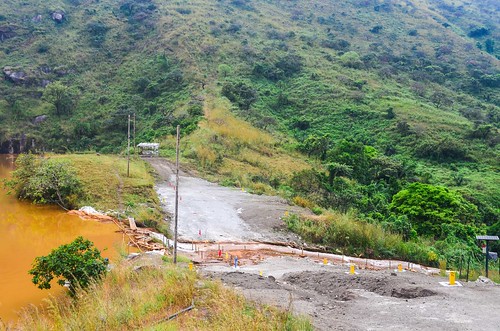
Well, in practice, the military has nothing to do and they are given the responsibility of the visitors as the area is touristic. They welcome me friendly and offer a place for to sleep. “We are the military so with us you are safe“, they proudly introduces themselves. Hmmm, I don’t feel particularly unsafe in Cameroon and would feel better in any small village or in the bush rather than between stupid young men with weapons. Officers of African armies are notorious for putting out flags with their rifle when there is no danger. They carry it visibly and ask bribes at road checkpoints to let innocent people carry on their normal lives. But when a real conflict is happening, they are the first ones to run away and hide. Here at Lake Nyos, they are 7 on site, taking turns every month, waiting for the CO2 alarm, which should never go off, to wake them up.
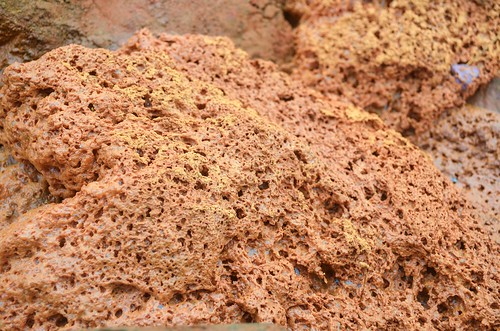
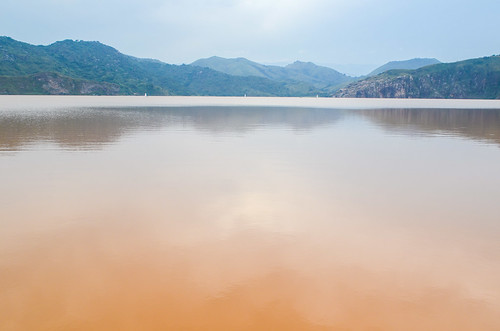
After they show me my place to stay, one is taking me apart to confess quietly: “well, my friends will ask you money, you will have to do this and this …“. It sounds fishy. He keeps talking in English as not everyone understands it, while the anglophone Cameroonians usually understand French very well. When I am back within the group, they quickly switch the conversation to “You know, our salary is small, blablabla” and want money for the room. They refuse to let me camp because it is “too dangerous” and keep asking money for the room. Actually, the rooms are the former quarters of the Soletanche-Bachy engineers and construction workers. The dam strengthening project is over and the Ministry of Tourism is planning to reuse the company buildings for tourism. There are painters currently working on another part of the camp, they said they almost finished the refurbishing.
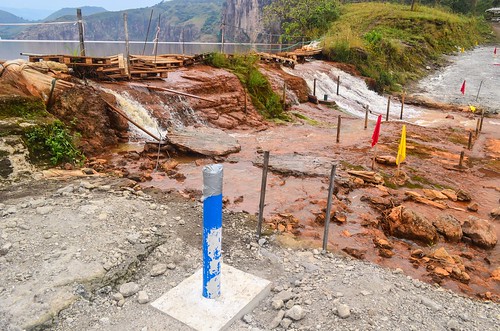
Until the official opening of Lake Nyos as a tourist site, the military is given the keys of the buildings to accommodate visitors, and the chief finally shows up. He opens a dorm room for me, confirming there is no money collection. The marker tag above the door makes me smile: it is the former room of “50 Cent” I met earlier. The officers organized into a small mafia were taking the responsibility of the safety of the visitors so well they turned it into a business. If you don’t want to be fooled, you have to make a scene for everything here. The military became instantly unfriendly. It’s Africa, a present is customary as a compensation for a small service, but when you have to give presents or money just to keep people friendly, it becomes quickly irritating.

The site is very beautiful but as usual, there is nothing done to facilitate the visitor’s experience. There is a boat to tour the lake but no petrol for the engine. There is a wooden staircase to walk down to the waterfall but it is falling apart. The Soletanche-Bachy dorms used to have water and electricity, but it doesn’t work anymore because no one cleans or services the compound. Only a rat and spiders inhabit the buildings now. I am always disappointed to witness such a waste of an opportunity, as it happens so often, where simple work and possibly small money can make things much better.
Instead, the military keep asking money and alcohol, idling right next to those improvements easy to set up.
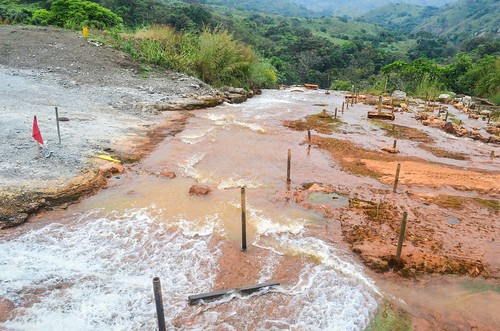

The workers told me the Chinese will come soon. Apparently, they would complete the dam strengthening and exploit the metals, but I can’t get much credible information.
The 1986 disaster explains why there is no one really living along the 40 kilometers of ring road in the vicinity of Lake Nyos. Almost 30 years later, few have dared to inhabit those fertile but doomed lands.
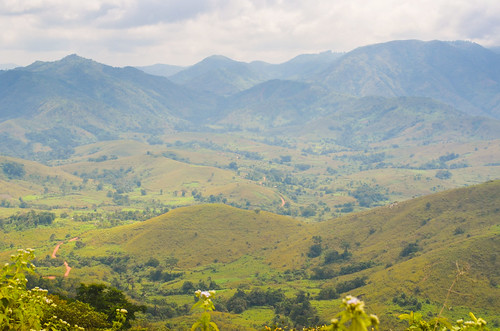
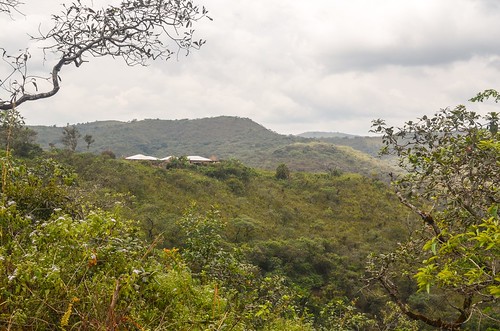
The road is passable until Wum. But before that, I am looking forward to the first place where I will be able to buy fresh food. There is nothing until the next village 20 kilometers further. I fetch water from the streams. Much needed, as the sun hits me right in the deserted hills. I must push the bike uphill quite often.

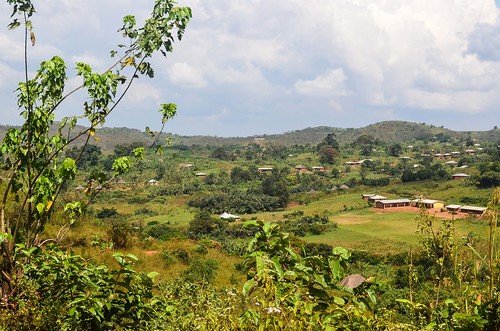
Civilization diffidently reappears. In We, electricity is back. Some 55 kilometers later, the tar is back on the road as I reach in Wum, the big town of the west side of ring road. I meet again with the Soletanche-Bachy workers who just left the site after completing their assignment. Now away from the Lake Nyos military, they say they were bullied there and that the army threatened them with rifles in the middle of the night they arrived on site.
The road from Wum is a very long downhill on a smoothly asphalted surface: it is too rare to be believed, and it goes almost too fast to enjoy the green hills all around.
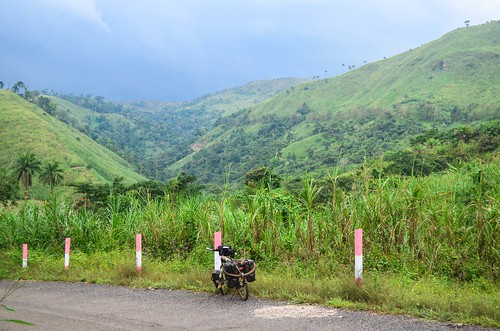
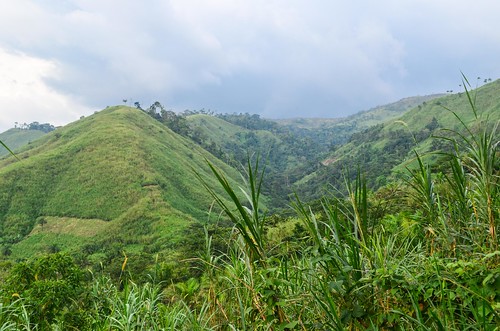
It stops when big gravel and earth replaces the asphalt just in Bafeng. It is the village near the Menchum falls. It is starting to rain and luckily there is an unexpected small and dirty guesthouse here. As if I needed to add another story to my collection of poor service experience, I am given a room of 3000 CFA by the caretaker. Once installed inside, the manager’s wife comes to say the price is actually 4000, and that the caretaker is stupid and doesn’t know the prices, that the price for long-term stays is different, etc. As responsibility-avoidance is a well mastered technique, the caretaker quickly jumps in to confirm: “Yes it’s true, I know nothing!“. I am now left with the manager’s wife who threatens to lock my bicycle inside until I pay her the extra money. The only fun in the story is that the door doesn’t even lock. Later in the evening, a road-worker knocks on my door. I was actually given the room he is renting on a long term basis. He now has to move with a colleague for the night…
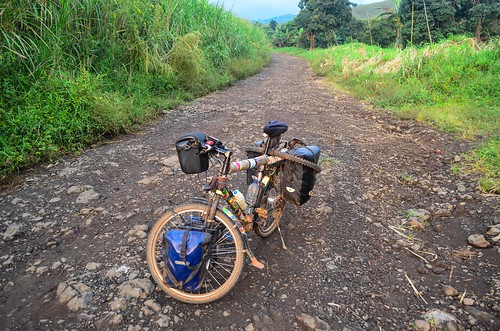
I have antelope meat for dinner. It is not really tasty but I can’t tell what they call antelope.

The river passing near Befang is the Menchum river, draining a significant part of the ring road highlands. Like the other rivers of the hilly Northwest region, it continues onto Nigeria and pours into the Benue river. Just after the town, we can hear a strong noise by the road. The impressive Menchum falls are hidden just behind a row of high plants. There are five persons on the viewing platform, two (presumably) Chinese and three Cameroonians taking measures with a rangefinder.
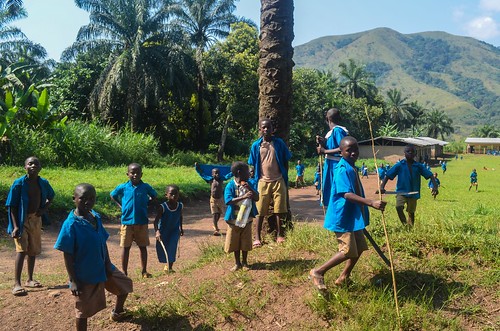
It could be the start of a dam / hydroelectric project. If the paved road is finally happening, and if the Chinese are involved for everything, then why not a hydro power plant. The power cut in Befang last night for an hour, so the planned 90 MW project won’t be useless.
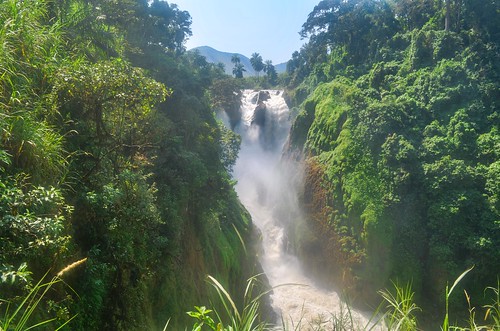
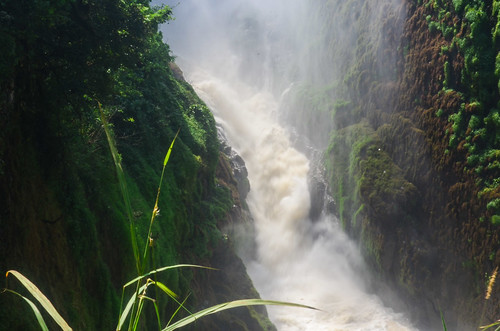
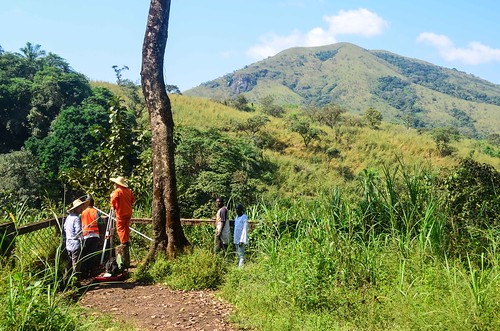
I continue fetching water from the streams, after ensuring from the villagers which stream is used for laundry and shower and which one is for drinking water. In the villages, people are drinking their warm 1 € beers in the morning. Others drink the palm wine, much cheaper, something like a small euro for 5 liters. It is collected from various palm trees or raffia trees.
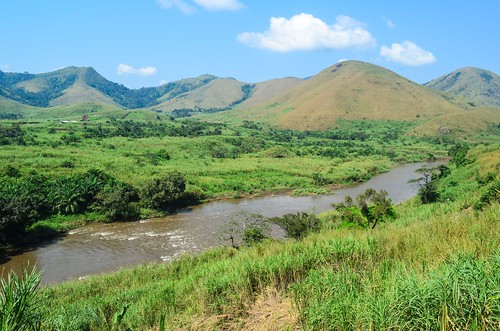
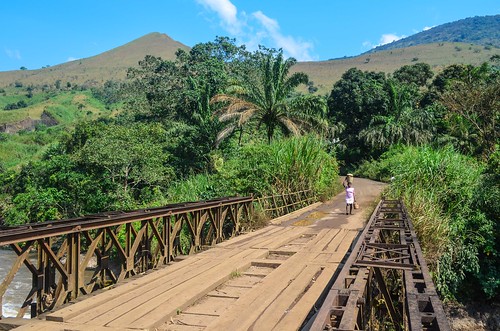
I keep going downhill while I know Bamenda is 1200 m high. I am now down at 500 m, the lowest elevation on the ring road. The more I descend, the steepest will the uphill be.
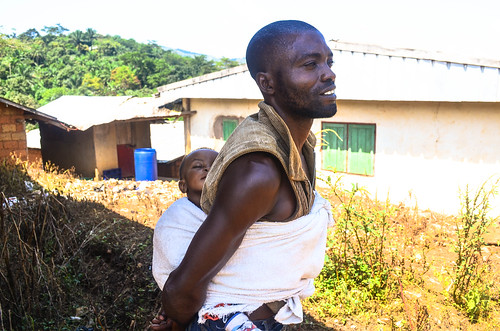
Eventually, the steep ascent appears. And of course, as soon as I start climbing, the rain invites itself. It pours until I finish the ascent and reach the top and the first shelter. I am soaked as if I bathed with my clothes. Fortunately it dries well in an hour or two of riding.
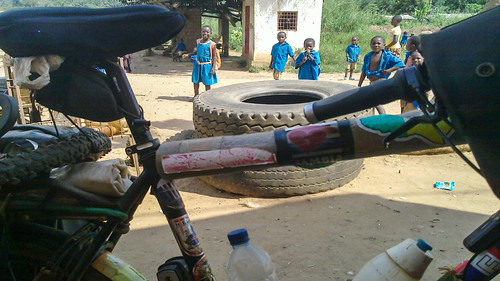
I am done in the evening in Bamenda, satisfied to have completed this tough and rewarding ring road. The road quality was not as bad as I expected; it took me 5 days to complete the 375 kilometers. Only a small portion of it is currently paved, but it sounds like it will soon be entirely asphalted. The hilliest part is the south and the east, the loneliest with the poorest infrastructure is in the west and in the remote north. I didn’t feel any threat from the do-not-go-there Nigerian border, only 30 kilometers from the ring road at its closest, but as I just came from the other side, I knew the risk was minimal.
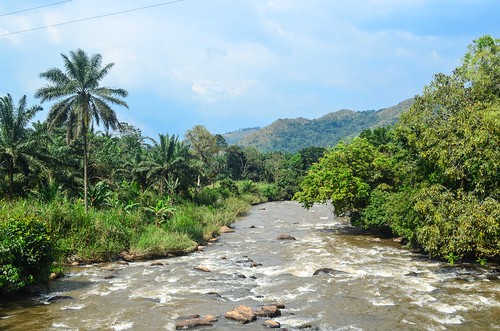
I reward myself with a grilled fish and miondo, the kassava stick, I really like it, even if it’s a more a dish of the coastal regions. People drink their beer warm, even if there is electricity in town to cool the fridges down. I don’t get it. Shopkeepers don’t put the beers in the fridge and clients claim it is too cold outside to drink a chilled beer. It is true Bamenda is cold, but not enough to wear something else than a tee-shirt and flip-flops. It’s just not tropical hot. As a result, beers are only available at room temperature, around 20 °C. The old lady managing the bar asks if she can have a beer on me. In her own bar. When it comes to requesting a free beer, I have already heard everything …
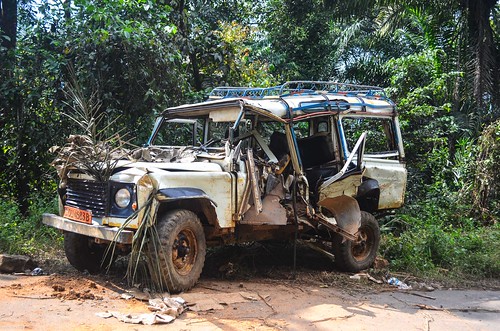
A better surprise is the shower at my hotel. It runs hot water! Surprise! Hot water in a 5000 CFA room, it is incredible. I didn’t have hot water since … Liberia maybe? Five months ago. Generally, bathrooms of hotels look like bathrooms anywhere else: a shower with two knobs and a toilet seat with pipes. But in practice, the hot water knob is useless and the toilet must be flushed with a bucket of water. I got so used to this that I am surprised when I see a toilet that works. The hot water knob is like (almost all) the railways in Africa: they are rusty, they must have been used in the old times, but today they don’t work and are reminiscent of a lost civilization.
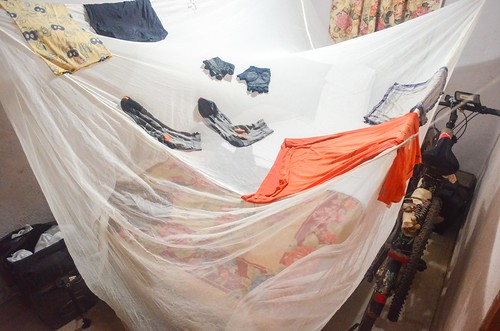






A true picture of what to expect when ever you visit these places. The hard fact is that tourism is still very under developed here but getting a personal tourist guide maybe a little costly but rewarding. you’ll get the minimum of good treatment of what ever you want except its really impossible.The write up for your travel experience is polite though but i think it would have taken a different tone if you ever visited India or thailand who are indigenous people too.Did you leave the place as it was or you made any positive impact? Its a cultural thing to see people expect from you especially when they believe you must have spent hugely to come visiting.It happens everywhere i visited in Asia .Truly its ignorance that rules the world.which year did you make your trip because im little amazed when you said you were surprised to get a hotel room with warm water in bamenda.
Notwithstanding the negative presentation of the good people of this Savanna Region who are naturally very hospitable, I appreciate the picturesque of this report. We are so blessed and there is much beyond the soil you see here!!
First and foremost, I really enjoyed your pictures. However, I am a little bit surprised with your observations because I have known Cameroonians to be very hospitable people. Don’t they give you at least free food, fruits and other things? Unfortunately, there is a popular saying in Cameroon, ” le Cameroun c’est le Cameroun.” In Cameroon, nothing is impossible. That is why I do not believe the government should be held accountable for everything. There was a lot of aid given to the Lake Nyos victims and environs, but the people from that very area stole everything. How do you steal from yourself? Now, you have politicians from the opposition who do nothing just like their government counterparts with all the parliamentary grants and micro projects money given to them. I know people will say that, “If steel can rust, how much more aluminum?” The people (Cameroonians) must change their mentality. They are too corrupt to their own destruction. You raised a pertinent issue about the old lady asking you for a beer, albeit in her own bar. It is generally the mentality of the poor where they think that someone they consider richer than them should be the only one to give. I have seen the same behavior right here in the US and when I visited Mexico, Costa Rica and Eastern Europe. It is important to note that when you see the kids laughing and clapping when they see you riding a bike, it is much more because they believed that every white person is rich and must only drive a car or fly in a plane. It is much more of out of fascination than scorn. When I use to go into the hinterland for evangelistic work, people used to laugh at me. They were surprised I could run in the bush to chase an animal or try to catch a fish with my bare hands. It was like, ” Oh yeah, this city dweller can also do some of these things?” Even some of the adults who have never lived outside, will still think that way. Have you visited Sabong Garri? There is a village after Ndu where they used to have a rock as a bridge. Let us know the day you ride through with your bike.